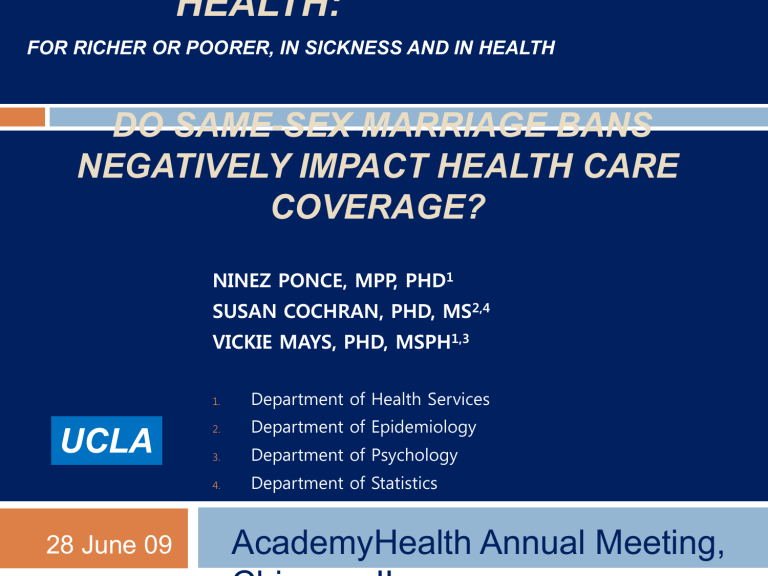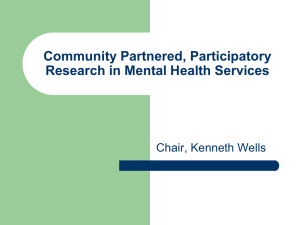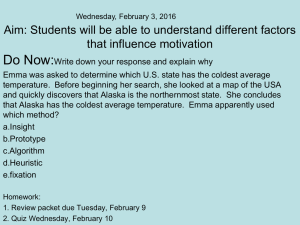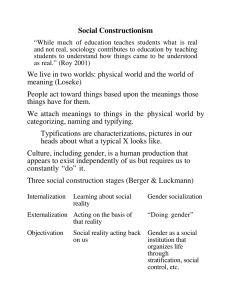HEALTH: DO SAME-SEX MARRIAGE BANS NEGATIVELY IMPACT HEALTH CARE COVERAGE?

HEALTH:
FOR RICHER OR POORER, IN SICKNESS AND IN HEALTH
DO SAME-SEX MARRIAGE BANS
NEGATIVELY IMPACT HEALTH CARE
COVERAGE?
UCLA
28 June 09
NINEZ PONCE, MPP, PHD 1
SUSAN COCHRAN, PHD, MS 2,4
VICKIE MAYS, PHD, MSPH 1,3
1.
2.
3.
4.
Department of Health Services
Department of Epidemiology
Department of Psychology
Department of Statistics
AcademyHealth Annual Meeting,
Chi IL
Background
Employer-based health insurance (EBHI) main source of healthcare coverage
Dependent EBHI coverage generally accrues through marriage
Sexual minorities are disadvantaged
This has both individual and potential societal costs
This Study
Objective
To determine the effect of sexual orientation on health insurance status for nonelderly adults in
California
Notably
Study focuses on sexual orientation and health insurance consequences for a single state
Predates the short period in California when same-sex marriage was legal
Stratifies by gender
Data Source
Exclusions
CHIS 2001, 2003, 2005
Sexual orientation Q’s
Population-based, RDD
Conducted in 5 languages
Racial/Ethnic
Oversamples
Interviews conducted by proxy
Respondents not reporting sexual orientation
Respondents 65 and older
Final Sample
N=110,254
63,719 females
46,535 males
Methods
Outcome
Current Health Insurance Status
Categories of: Uninsured, Privately-purchased, Public,
Employer-based own, Employer-based dependent
Predictors
Regressor of Interest
Sexual Orientation Status: Gay or Lesbian compared to
Heterosexual
Other control variables
Race/ethnicity, Age, Income, Education, Citizenship,
Partnership Status, Minor Children, Language of Interview,
Rural/Urban Labor Characteristics, Health Status
Methods
Statistical Analysis
Weighted multivariate multinomial logit models:
Full sample (all nonelderly adults)
Only partnered/married adults
All models stratified by gender
Computed predicted probabilities and relative risks
Gays/lesbians relative to heterosexuals
Bootstrapped 95% CIs
Sexual Orientation and
Partnered/Marital Status
48%
36%
8%
48%
3%
Women
56%
62%
36%
2%
Men
57%
36%
7% Not Married or
Partnered
Partnered
Married
Health Insurance Status:
Comparing Gay Males with Heterosexual Males
Sample size
All Males
46,535
Partnered/Married
29,057
Uninsured
Public
Own EBHI
Dep EBHI
Direct Purchase
Relative Risk [95% CI] Relative Risk [95% CI]
0.88 [0.59, 1.02]
1.21 [0.96, 1.55]
1.03 [0.96, 1.14]
0.78 [0.49,1.08]
1.07 [0.86, 1.25]
1.45 [1.07, 1.93]*
1.91 [1.21, 2.71]*
0.93 [0.80, 1.00]
0.51 [0.34,0 .71]*
1.16 [0.63, 1.65]
*p<0.05 CHIS 2001, 2003, 2005; bootstrapped CIs controlling for Race/ethnicity, Age, Income, Education, Citizenship, Minor Children,
Language of Interview, Rural/Urban ,Labor Market Characteristics, Health Status
Health Insurance Status:
Comparing Lesbians with Heterosexual
Females
Sample size
Uninsured
Public
Own EBHI
Dep EBHI
Direct Purchase
All Females
63,719
Partnered/Married
38,195
Relative Risk [95% CI] Relative Risk [95% CI]
1.39 [1.00, 1.81]* 1.99 [1.43, 2.76]*
0.95 [0.72, 1.41]
0.98 [0.78, 1.11]
0.90 [0.52, 1.33]
0.82 [0.60, 1.11]
2.06 [1.01, 3.35]*
1.27 [1.08, 1.48]*
0.32 [0.19, 0.44]*
0.98 [0.72, 1.51]
*p<0.05 ; CHIS 2001, 2003, 2005; bootstrapped CIs controlling for Race/ethnicity, Age, Income, Education, Citizenship, Minor Children,
Language of Interview, Rural/Urban ,Labor Market Characteristics, Health Status
Summary
Among cohabiting/married nonelderly adults, gay men and lesbians are more likely to be uninsured than their heterosexual counterparts
Due to a much lower likelihood of receiving dependent EBHI
Partnered sexual minorities are also more likely to depend on public insurance than heterosexual counterparts
Limitations
Low survey response rate
Telephone administration introduces nonresponse bias but addressed in weighted analysis
Wage/fringe benefit tradeoff not determined
Inability to differentiate unmarried but partnered couples into those that were registered civil unions/domestic partnerships and those that were not
Conclusions
Bans on same-sex marriages lead to EBHI disadvantages among gays and lesbians
Lower EBHI dependent coverage drives the disadvantage and appears to levy a toll on publically-financed health systems and raise the risk of uninsurance
Implications
Employers who discriminate are less efficient and lost efficiency threatens competitiveness and solvency
(Becker, 1971)
Disadvantage stems from how EBHI is offered and taxed –so has implications for upcoming changes in insurance
Same-sex marriage ban and its effects on
EBHI akin to “middle class” tax on
EBHI—and this study saw negative impact on coverage
UCLA
Thank
Y
QUESTIONS AND
COMMENTS
National Institute of Drug Abuse (DA 15539, DA 20826), the National
Center for Minority Health and Health Disparities (MD000508), the
National Cancer Institute, K07 CA100097





